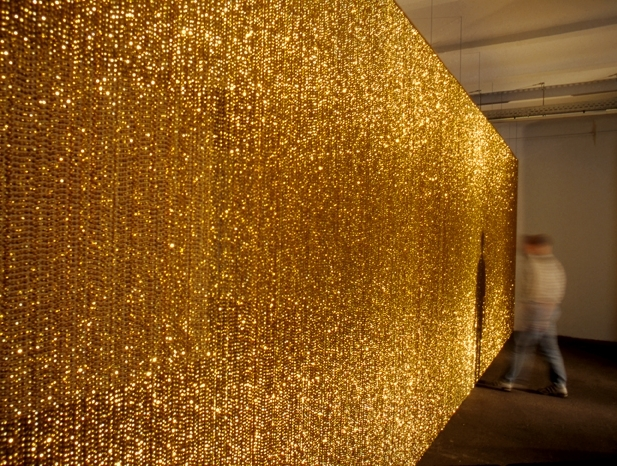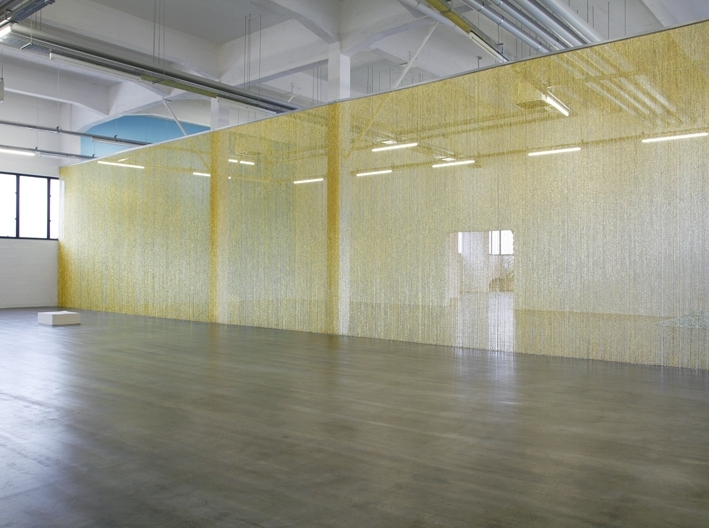REFLECTION
Artist Felix González-Torres: A meditation on mortality

You may know Felix González-Torres as the candy artist. The guy who exhibited piles of bright, cellophane-wrapped edible bonbons the weight of a grown man, encouraging the viewer to participate by taking from the pile.
“Above all else, it is about leaving a mark that I existed: I was here. I was hungry. I was defeated. I was happy. I was sad. I was in love. I was afraid. I was hopeful. I had an idea, and I had a good purpose and that’s why I made works of art,” once said Felix González-Torres.
A queer activist and identity artist, González-Torres lived and made work in the United States in the time of another plague, HIV/Aids – known by some as “the gay plague”.
Before antiretrovirals, from the 1980s to the 1990s, the HIV/Aids epidemic caused nearly half a million deaths in the US, aided and abetted by the attitudinal plagues of stigma, judgement, othering and the long shadow of denialism.
Post-retrovirally, our country currently has the highest infection rate.
These vast numbers don’t and can’t carry the impact of the personal. Only that one death (or deaths) which are known to another can make the political personal. I remember in the 1980s a distraught queer friend raging against the decimation of her gay men friends to HIV/Aids that had left her furious and friendless.
I write this in June, the month that celebrates International LGBTQI+ Pride. In approximately 32 countries on the African continent, it’s still illegal to be queer if you are a man. Some are more tolerant if you are female because “women are really not that important”.
Corrective rape, abduction and the murder of lesbians continues unabated in townships, and cases pile up which will probably never see the inside of a court, let alone go to trial.
We’re also more than two years into Covid. In its wake, a myriad losses – both great and small – exact a heavy toll on our mental, emotional and physical wellbeing.
You may know González-Torres as the candy artist. The guy who exhibited a series of piles of bright, cellophane-wrapped, edible bonbons the weight of a grown man, encouraging the viewer to participate by taking from the pile.
With the removal of each sweet, the weight of the pile lessened, symbolising the progress of the disease and the fading of a life. González-Torres’s work truly makes the personal political and the political personal.
“I want to make art for people who watch the Golden Girls and sit in a big, brown, Lazy-boy chair. They’re part of my public too”
González-Torres’s approach to art-making was hugely influenced and guided by the work of great thinkers like Walter Benjamin, Fanon, Althusser, Barthes, Foucault, Borges, Mattelart and Brecht.
Without them, he said, “I wouldn’t have been able to make certain pieces… to arrive at certain positions.” He felt that “some of their writings and ideas gave me a certain freedom to see”.
González-Torres’s genius was twofold. His ability to use the simplest, most ordinary of materials – not generally associated with white cube galleries – coupled with an accessible, laser-sharp conceptual clarity.
His was not about an in-your-face confrontational activism found in other approaches from the time, like suspending contaminated blood above an audience. His was a quieter, more inclusive soft sell with humour, sorrow and lots of camp, queer eye stuff.
“I want to make art for people who watch the Golden Girls and sit in a big, brown, Lazy-boy chair. They’re part of my public too,” he said.
“Untitled” (golden) was created in 1994. This was both a prolific and devastating year for the artist. It was the year his lover Ross Laycock died of Aids. It is to Laycock who all his works are dedicated.
Four years later, aged 38, González-Torres would follow Laycock when he too lost the battle to Aids.
“Untitled” (golden) is part of a series of untitled curtains. Between 1991 and 1995, González-Torres’s made five massive curtains, all untitled, but with clues inserted in brackets. The series began with (chemo), (blood), (beginning) and ended with (gold). They are all related to HIV/Aids.
Many masters of the visual have tried to give us an evocation of death; its counterpart the fervent human desire for resurrection and eternal life – picture the depictions of the deposition of the dead Christ. But they are all a bit ponderous, a bit too fleshy and maudlin.
González-Torres gives us something different: a combination of both light and deep. To my mind nothing before has achieved it quite as effectively as his “Untitled” (golden) curtain. And there is not a body in sight – just a humungous curtain of twinkling, faceted, faux-gilded beads.
A curtain is like a veil for a window, as a veil is for humans to both conceal and reveal. Certain states or situations lower the veil. By veil, I mean the membrane between the corporeal and metaphysical states, such as menstruation, the in-love state, trance states, loss, sickness and the presence of death.
When the metaphysical veil is lowered, everything is bought into a sharper focus and consciousness and our awareness is heightened. Think of Orpheus in the underworld given a second chance with his Eurydice, where the mirror becomes the veil that separates him from his beloved.
Gold because of its value and incorruptibility is generally associated with the status of kings and the halos of the holy. But González-Torres has democratised it. His gold is the tacky imitation of glitzy mass-product of camp disco bling. Or on a more practical level, an inexpensive way to section off areas in lower income homes and work spaces.

“Untitled” (Golden), 1995. Installed in Felix Gonzalez-Torres: Specific Objects without Specific Form. Wiels Contemporary Art Centre, Brussels, Belgium. 16 Jan. – 28 Feb. 2010. Cur. Elena Filipovic. Image: Supplied / Sven Laurent / courtesy of Wiels Contemporary Art Centre.
“Untitled” (golden), like much of González-Torres’s work, is participative. It encourages your engagement in an easy, non-threatening, manner. In the case of “Untitled” (golden), you are invited to walk through a curtain of suspended beaded strands. As if “to rent”, “to part”, “to pierce”, “to lift the veil”. But this great shimmering expanse respects your choice should you decide not to.
There is no sense of gaining entry to a state of spiritual awareness. Just a vast, echoey empty space and yourself.
Passing through “Untitled” (golden) is not like treading an ancient labyrinth armed with a burning issue. Hoping, in the poet TS Eliot’s words, “to arrive where we started and know the place for the first time”.
There’s none of that. “Untitled” (golden) is quicker, more immediate, more impersonal – more modern journey, if you like.
There is nothing on the other side of those shining gold beaded strands. No limbos, hell realms or Tibetan bardos; no resurrections and no reincarnations.
There is no sense of gaining entry to a state of spiritual awareness. Just a vast, echoey empty space and yourself. A mirror of the emptiness found just on the other side of where you first entered.
Or you could choose to read the emptiness as the pregnant void filled with innumerable possibilities from which all comes and to which all returns.
González-Torres wites about making artwork as a drive to mark his existence. For the viewer, “Untitled” (gold) is a contemplation on loss and mortality.
And it is his invitation to contemplate, in a non- prescriptive way, the great mystery that is his unspoken gift in the face of death – the greatest democratiser of all. DM/ML
In case you missed it, also read A personal contemplation on Henri Matisse’s The Red Studio — L’Atelier Rouge
A personal contemplation on Henri Matisse’s The Red Studio — L’Atelier Rouge


















 Become an Insider
Become an Insider
Sometimes a curtain is just a curtain. Or a banana taped to a wall is just a banana taped to a wall.
Merely attaching some arbitrary symbolism to an otherwise mundane object is not art. It is the corruption of art.
If everything is art, then nothing is art. Please stop polluting our sense of beauty with this absurd nonsense.